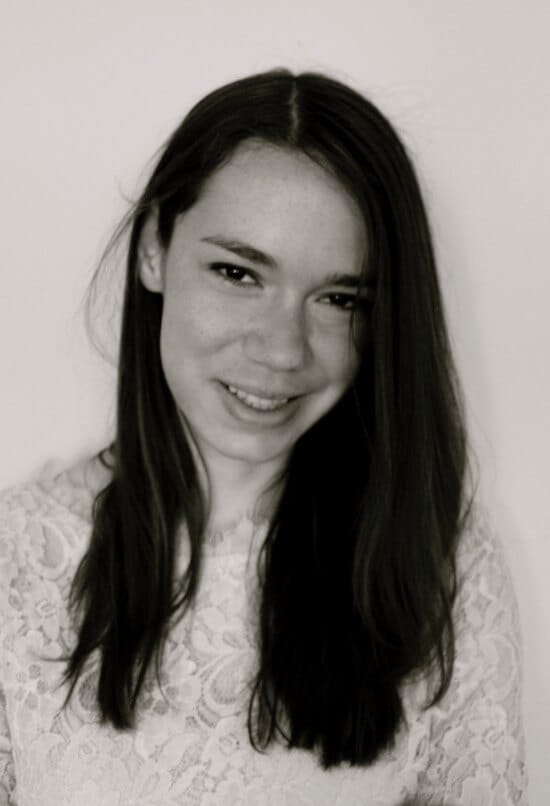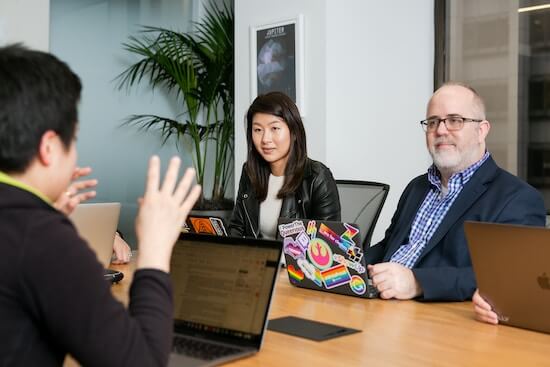Product Talk is Growing: Meet New Instructor Ellen Brandenberger

Product Talk’s North Star metric is to increase the number of product trios who adopt a continuous discovery cadence to their work. This is what inspired Teresa to write the Continuous Discovery Habits book and shift Product Talk to a course-first business. And this outcome is also the reason why we continue to expand the team of Product Talk instructors—the more instructors we have, the more cohorts we can offer, the more students we can serve, and ultimately, the more people who will feel empowered to adopt continuous discovery.
In late 2022, we introduced new instructor Ellen Juhlin, who teaches Continuous Interviewing and Opportunity Mapping. Today, we’re excited to share that we’ve added yet another instructor (and yes, her name is also Ellen!) to the roster. Meet Ellen Brandenberger, a product coach and consultant and Director of Product at Stack Overflow. By the way, it’s not a requirement that new instructors be named Ellen—just a fun coincidence!
You may already know Ellen if you participated in the most recent cohort of Defining Outcomes or if you’ve been hanging out in the CDH community where Ellen regularly shares her insights and resources.
But if this is your first time meeting Ellen, we wanted to give you the chance to get to know her and learn more about her product background. We’re happy to continue growing the pool of Product Talk instructors and we hope you’ll join us in giving Ellen a warm welcome!
Tell us a bit about your background. How did you end up in product?
Most of my background is in education and research. Prior to product, I was working in a classroom and then doing research on teacher education. I was kind of adjacent to product in a lot of ways, but not quite in the field. I then decided to pursue a Master's of Education, which was focused on building online learning and technology. I took a class on educational product development and I really loved it, so I started asking, “What's the job that would allow me to do this full time?” As I started doing research and talking to people, being in product management for educational products came to the top of that list.
The story about how I landed my first role in product started with my advisor in graduate school, who introduced me to someone at Pearson who was hiring PMs—but primarily as interns. By that stage, I’d been an intern for four or five years throughout graduate school, so I was really ready to start a full-time role. I let Pearson know that I was looking for something full-time rather than an internship—and I was also considering a product role at a startup. At that point, Pearson invited me to interview for a full-time role, which I ended up getting!
I spent three years at Pearson, then I joined Thinkful—which at the time was about a 60-person startup. I was the first PM on the team, so that role involved everything from setting up product processes to building a roadmap and doing discovery. I did that for about two years and then they were acquired by Chegg. Once they were acquired, they hired a VP of Product, who I worked with briefly. When he left, I took on the Head of Product role and absorbed the content development research and design teams. And I’ve been in my current role as Director of Product at Stack Overflow for about six months. So my path from junior IC to director has been pretty fast, but it's been good!
It was around halfway through my time at Chegg that I started working with Hope Gurion as my coach. And that’s how I was introduced to Teresa and Product Talk.
Can you share some highlights of your career so far? What are some of the projects or accomplishments you’re proudest of?
One of the first projects I worked on at Pearson was for a product called Revel that had very much achieved product/market fit, but they were really struggling to scale and the product was kind of breaking underneath users. This is a good problem to have, because you have more demand than you have supply—in the software world it’s very rare.
So my team took a look at our existing infrastructure and rebuilt it from the ground up to support that scaling and there was a very early adoption of cloud-based models. That was really fun because I got to learn a lot about the underlying tech, but it also unlocked quite a bit of cost savings and enabled us to meet the demand that we had. That was really cool because it was my first big milestone as a PM and it all happened within my first year.
Another win was when I moved from Pearson to Thinkful. They had just acquired another company at the time, so I spent my first six months there basically integrating the two products and making them into one and preserving the existing use cases and improving the outcomes for users—all while doubling the load on one of the two products. It involved a lot of discovery and a lot of coordination across the teams to get there. Even four years later when I left, it was still considered a major success story within the company.
And later on that team, I took on helping the teams build new content verticals, figuring out which new topics our courses were structured around. We launched a new product in cybersecurity, which became the biggest product in the entire business a few months after launching. We doubled and tripled our expected demand, which was really cool.
Can you share your continuous discovery journey? How did you first learn about continuous discovery and what have been some milestones along the way?

I've always been a big believer in user and customer research. It goes back to my background in professional and academic research. So I always knew that was fundamentally important to me as part of building good experiences for folks.
That was around the time when design thinking was being popularized so people were asking, “How do you bring community to design thinking?” And my response was: “You talk to the humans.”
When I went to Thinkful, I was always beating the drum of: We need to be talking to our users or customers. If they're one and the same, great. But if not, we need to talk to both. And that was kind of a throughline for me. Hiring and developing research practices on my team was a big deal.
For a long time, I felt like there were pieces to the bigger puzzle of a better way to do product that I couldn't quite conceptualize or put together.
When I was transitioning from a group PM into a team lead, my manager at the time was looking for someone who could help me bridge that gap, and he found Hope Gurion, who’s the Founder of Fearless Product and a Product Talk coach and instructor.
I started working with Hope and we just immediately clicked. She shared her method for defining outcomes and it was really helpful. I started implementing it with my team and saw the benefits of that. I would also share feedback back with her, so we always had a two-way relationship.
When she started working with Teresa, she shared some of the things they were working on, including content revisions for the Defining Outcomes course.
When Teresa's book came out, I absorbed it in around 30 seconds. I started experimenting with different portions of my team to help solve some of the challenges I had, like communicating the breadth of options with the opportunity solution tree. Doing assumptions testing versus prototype testing felt like a really viable way to actually enable your team to do continuous discovery and not have to do a big, heavy study every single week. It felt like it made those best practices more manageable once you understood the fundamentals.
I was leading a content team very briefly, but I started experimenting with whether they could use continuous discovery. They were doing interviews for our learners online and there was pretty clear evidence that the curriculum design was the problem. They looked at the curriculum, they did some interviews, they started mapping out opportunities. I started pushing them to think about how to run assumption tests and identify our biggest opportunities.
At the time, our graduation rate was significantly lower than the industry average. And while I don’t work with that team anymore, I heard from someone who’s still on it that they’ve made huge strides. They’ve been able to bring the graduation rate above the industry average, which is a huge accomplishment—and that’s at least partially due to continuous discovery.
What has been your experience with Product Talk courses and the CDH community?
I've always really admired Hope, and she talks really highly of Teresa. Hope is the closest thing I have to a mentor in my career at this point. She’s been a great source of support on a lot of levels.
After being a sounding board for Hope when she was iterating on the Defining Outcomes course, I shadowed her in one cohort of teaching the program, and then I just finished my first solo cohort earlier this year.
Defining Outcomes has been the most impactful aspect of continuous discovery for me, both in terms of my involvement with the course content and also because I really enjoy helping businesses break down revenue outcomes or corporate outcomes into product goals and then setting targets against product goals. It’s foundational to leadership and product in an outcomes-based world.
Since I started teaching with Product Talk, I've also been engaging with the community, which involves responding to questions, giving people feedback asynchronously, welcoming folks to the community, and joining working groups.
What inspired you to take on the role as a Product Talk Academy instructor? What have been some highlights so far?
It goes back to the belief that discovery is the core of building great products. It's a fundamental belief for me that good products are built in this way. And so being part of that community and having an opportunity to learn more is valuable to me.
I also appreciate getting a sense and a context of what I know versus the larger community and contributing back to it. When I see this other organization is struggling with something, I like asking how I can give back to them with the things I've solved for and vice versa.
The really fun thing about Defining Outcomes is that setting good goals is often a really big challenge for a lot of organizations. And the course really makes that very simple.
One highlight for me in the last cohort was having a student who everything just clicked for in the fourth week. He said, “This is so simple and so effective. I just can’t believe I didn’t see it before.” Being there for that magic moment when it all made sense to him was really fun to see.
What would you say to someone who was thinking about joining a Product Talk Academy course? How could they get the most out of the experience?

The courses are brief and they do have a good amount of homework, but if you really want to get the most out of them, make sure you show up to every class prepared, excited to engage and to collaborate.
I see a lot of students who do awesome stuff because they're well prepared—they're asking their peers questions, they're collaborating, they're investing the time in the course. You really get out of it what you put into it.
Ellen Brandenberger will lead the next cohort of Defining Outcomes in July 2023. If you’re excited about connecting the dots between your product outcomes and business outcomes, come join her!




Comments ()